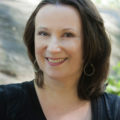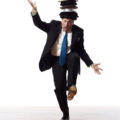After Tony Waag, Tutto Mondo interviews Barbara Duffy to talk about her career and her personal experience with tap dancing improvisation.
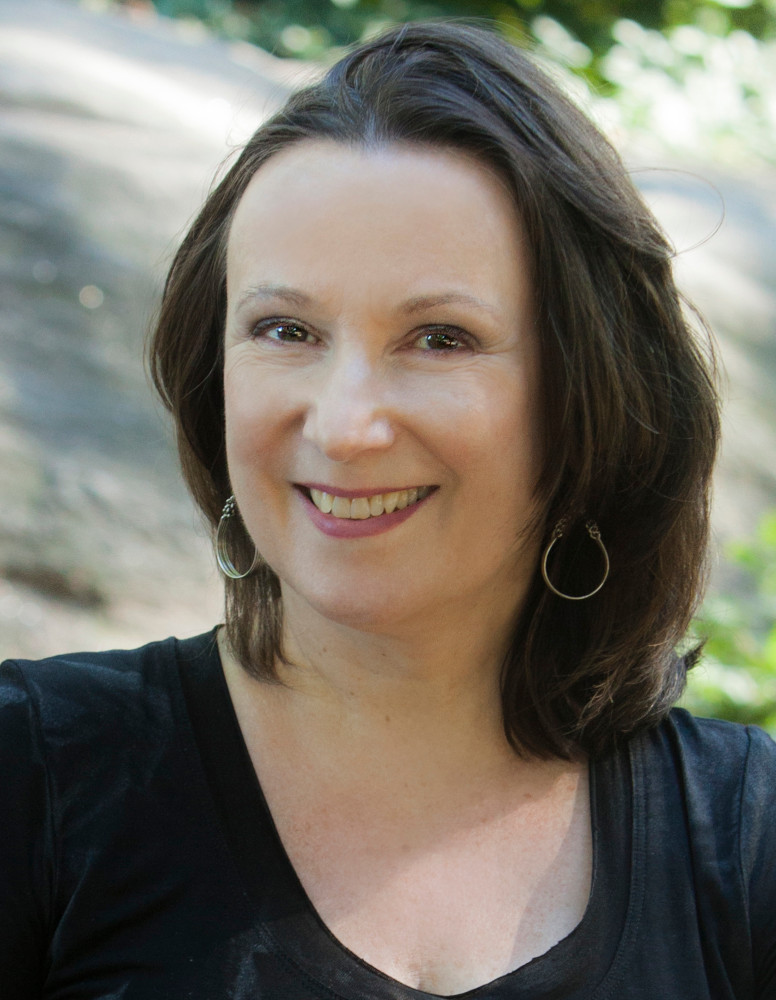 1. Photo by courtesy of Barbara Duffy.
1. Photo by courtesy of Barbara Duffy.
Barbara Duffy, born in Massachusetts, is a tap dancer, choreographer, and internationally recognized teacher. After her studies with Leon Collins, C.B. Hetherington, Pam Raff, and Dianne Walker, she moved to New York to study with Brenda Bufalino and she became a member of the American Tap Dance Orchestra.
Among her credits as a dancer, in 1997, she was featured in Boom, a tap dance choreography by Gregory Hines for the Gala for the President.
Duffy created an all-woman tap dance company, Barbara Duffy & Company, which made its debut at the New York City Tap Festival in 2001 with Duffy‘s piece, entitled Speedball.
Hi Barbara Duffy, thank you for the opportunity to take this interview.
What is tap dancing for you and what do you love about it?
«For me, tap dancing is expressing emotions through rhythm, sound, and body movement, integrating all three to tell a story. I love that I can be a musician and a dancer at the same time».
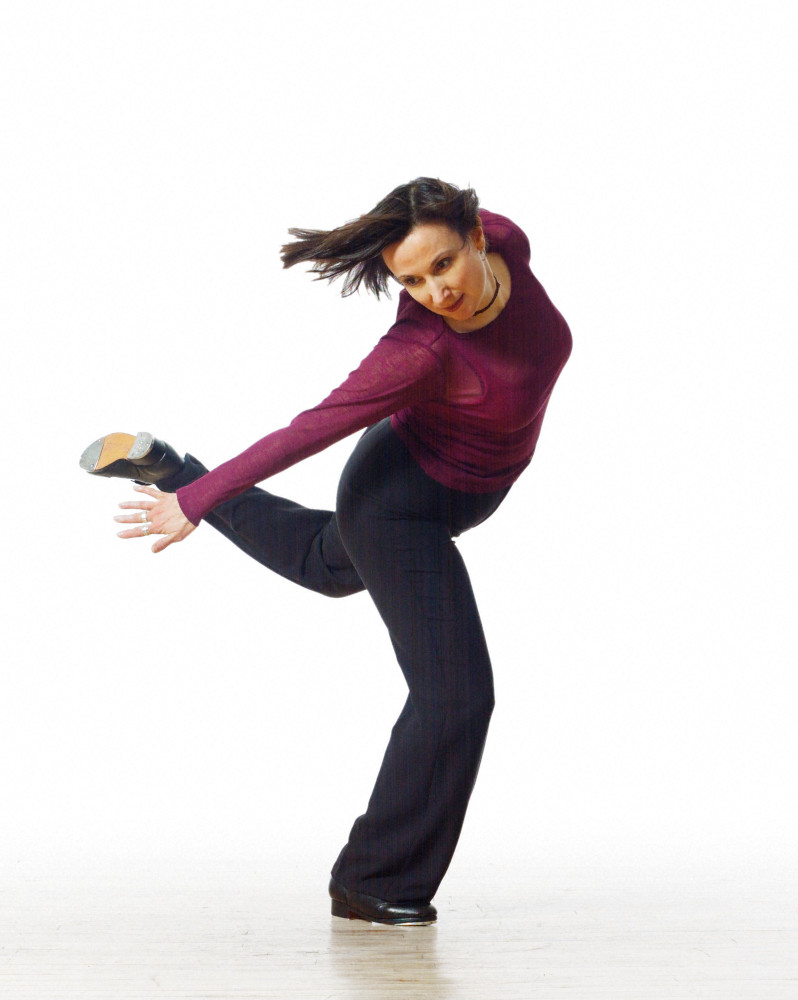
2. Photo by courtesy of Barbara Duffy.
Which was your favorite show to dance into during your career and why? Any memories you want to share with us?
«I have many memories of fun shows I’ve been in over the years, but one of the highlights of my career was being a dancer/actor in Anthony Morigerato’s short film, When Snow Falls, in 2019, starring Ted Louis Levy and myself. It is the story of a man who remembers a past love at Christmas time. The process of learning new choreography, filming in a mansion in upstate New York with a wonderful crew was an absolute pleasure and artistically extremely fulfilling. The film has won several awards and been an “Official Selection” in numerous film festivals. I believe it will be released this fall before Christmas».
Barbara Duffy, do you have any favorite tap dancers from yesterday and/or today?
«One of my favorite tap dancers was the late, great Bunny Briggs. He always told a story in his dancing. I also loved the rhythmic sensibility and freedom that Gregory Hines displayed. Ted Louis Levy is also a favorite of mine. He’s a wonderful performer and singer, as well as tap dancer who really swings! And of course, I love Brenda Bufalino’s beautiful melodic sounds».
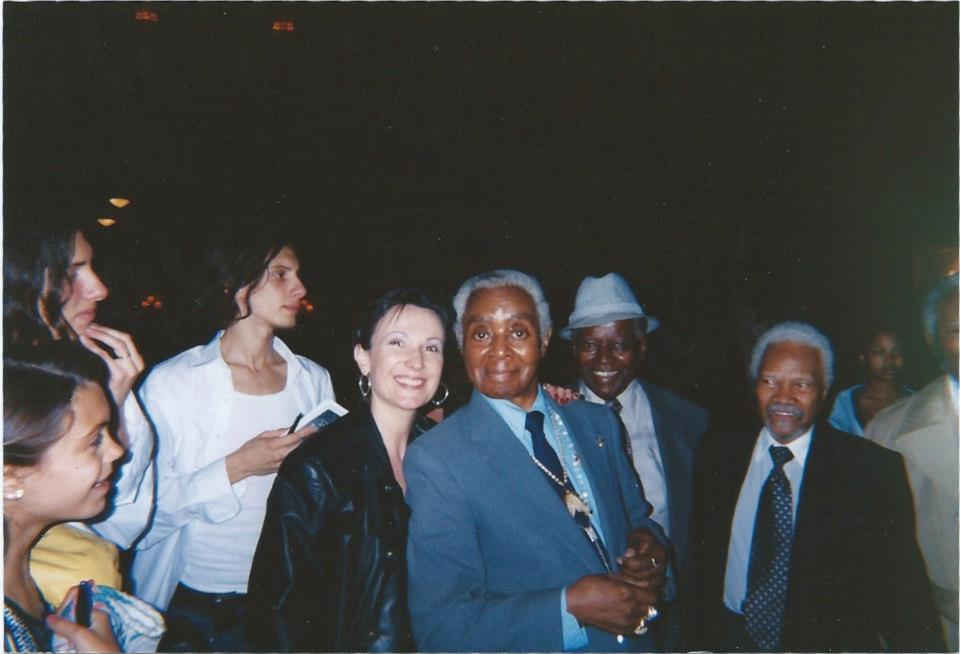
3. Barbara with Bunny Briggs and Harold Nicholas in 1999, photo by courtesy of Barbara Duffy.
Studying with Leon Collins, was an important momentum in your training as a Tap Dancer. How has his style influenced your career?
«When I was a child, I took dancing lessons at a local dance school in Massachusetts. I took ballet, jazz, and tap. I learned the Broadway-style of tap dancing, lots of dancing on the balls of the feet with specifically placed arms. I dreamed of being in a Broadway show someday. I had never seen any other style of tap, except in the films with Gene Kelly and Fred Astaire.
When I moved to Boston around 1980, I took tap lessons, again in the Broadway-style. My sister worked in an insurance company and her building had a theatre. She told me of a tap show that was going to happen there. We went to the show and for the first time, I saw Leon Collins dance. His style was so different from what I had been taught and I was immediately drawn to it, very musical with close-to-the-floor footwork. At that time, I didn’t know I could be only a tap dancer. Leon showed me that it was possible.
Unfortunately, I wasn’t able to attend his classes, because of where his studio was located. At that time, there were lots of racial tensions and the area of his studio wasn’t a safe one. I was disappointed and as time went by, I thought I would just give up dancing. At that moment, I saw a sign in my neighborhood that a new tap studio was opening. It was called Tapper’s Paradise and the teacher was Leon Collins! I couldn’t believe that Leon moved his studio right across the alley of my apartment! It was definitely a sign from the universe.
From that day on, I studied and at his school with his partners CB Hetherington, Pamela Raff, Dianne Walker and of course, Leon. I learned his routines, which are still so valuable, wonderful lessons in rhythm and technique. Through Leon, I met Brenda Bufalino. So, Leon Collins is the reason I am a tap dancer today. He changed my life!».
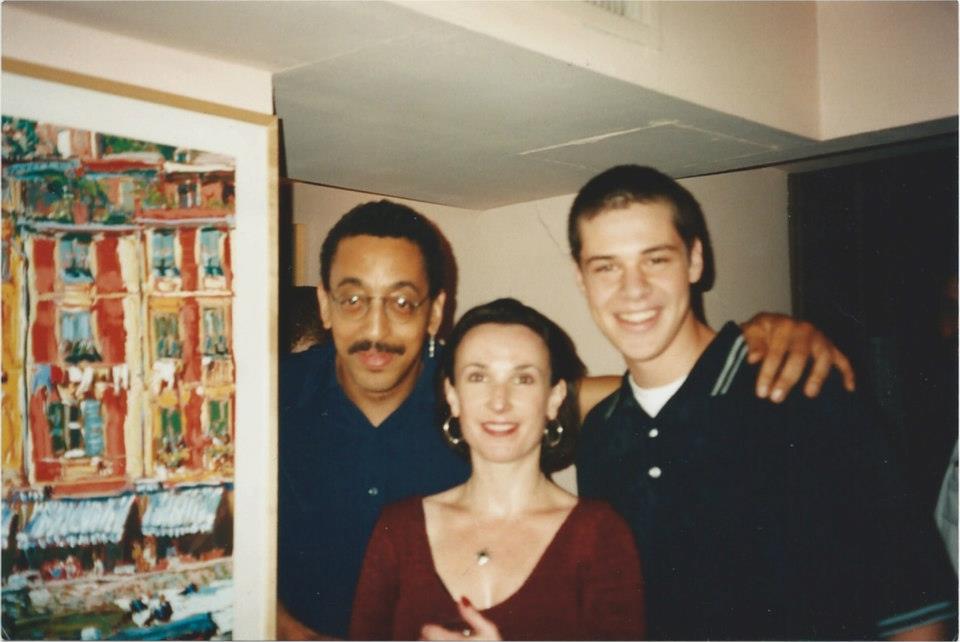
4. Barbara with Gregory Hines and a student in Zinno’s, photo by courtesy of Barbara Duffy.
From 1986 until 1995 you were a member of the American Tap Dance Orchestra and you had the opportunity to work with Brenda Bufalino. Any memories, about this experience, you would like to share with us?
«The reason I moved from Boston to New York City in 1985 was to study with Brenda Bufalino. After taking a couple of workshops with her at Leon’s studio, I knew she had to be my next teacher. (Leon passed away in 1985). Not only is she a beautiful tap dancer/musician and storyteller, but she is also a generous teacher. (She is now 84 years old and still performing!) She formed the ATDO with some of the students in her classes at the infamous, Fazil’s rehearsal studio. I was one of those students.
Brenda created a new way of ensemble tap dancing with small groups of the ensemble each dancing different steps and rhythms at the same time, therefore creating an orchestra. It was ground-breaking at the time. I became the Dance Captain for the company and learned everything from musicality and putting a show together to creating choreography. The ensemble worked together for many years and they became my tap family.
Today, I still collaborate with founding members, Tony Waag, (the Director of the American Tap Dance Foundation) and Margaret Morrison, who directs the foundation’s Tap Teacher Training program. I also still have a close relationship with Brenda. I am so grateful for all she did for me and for my career. I have great memories of touring, dancing, and laughing together!».
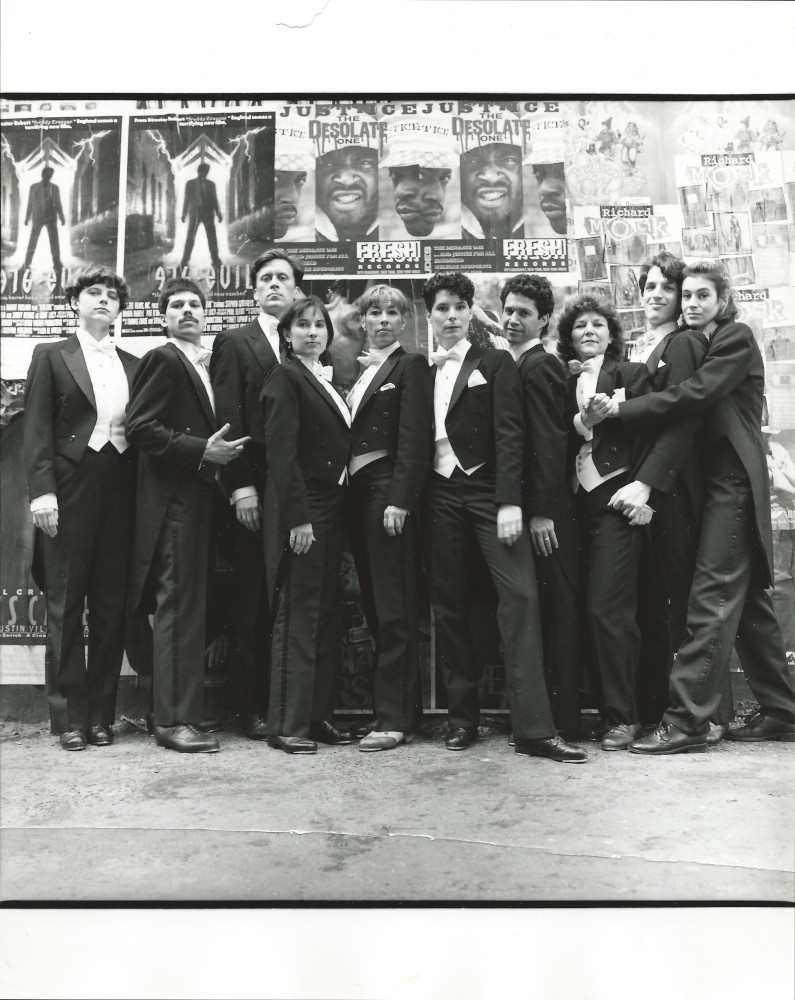
5. The American Tap Dance Orchestra, photo by courtesy of Barbara Duffy.
Barbara Duffy, you have performed at Gala for the President in 1996, in Boom, a tap dance choreography by Gregory Hines. How was working with him?
«I first met Gregory in 1988, when I was dancing with Brenda Bufalino’s American Tap Dance Orchestra. Early in 1996, I received a call from him asking me if I would like to dance with him. Mark Mendonca and Cyd Glover were also going to be in the piece for a TV show presented every year called, Gala for the President. He said we would be dancing at the Ford Theatre in Washington, DC, to honor President and Mrs. Bill Clinton. Naturally, I was thrilled that he would ask me. I was calm on the phone, but on the inside, my heart was racing with excitement. He was so casual about the whole thing, wondering if I was free on those dates. I flew to California to rehearse.
The atmosphere in the studio was always playful and relaxed. Gregory didn’t walk in as the choreographer; rather, we were all tap dancers working out together. He didn’t prepare any choreography for the rehearsals, but came in with a groove in mind. He created the steps in the moment, from a tune that he liked, maybe something from the band Urban Nights or the composer Phillipe Masques, and when he did create a step, he liked to play around with it, trying it many different ways until he settled on what he thought would work best. The music, called Boom (named by Gregory) was created by his regular band composer/pianist, Rick Cutler after the dance was set.
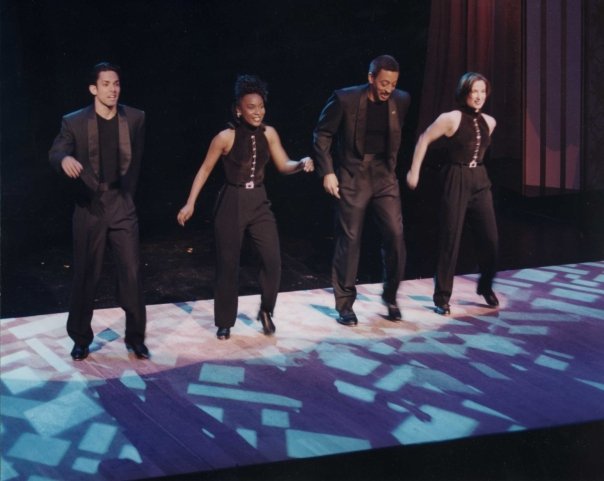
6. Barbara in Boom at the Gala for the President, photo by courtesy of Barbara Duffy.
In Washington, D.C., on the night of the performance, which was dancing live on national television for the President of the United States, I was so nervous, but he was joking around with us and exuded such confidence in us that we knew we were just going to go out there and hit! For him to include us in this event, when he could have performed by himself shows that he wanted so much for tap dance to be recognized, presenting to America the racially diverse, young, up-and-coming tap dancers at the time.
Dancing with Gregory was one of the best experiences of my career and I feel very fortunate to have worked with him!».
You have created Barbara Duffy & Company an all-woman tap dance company, which debuted in 2001 with Speedball. How did you come up with the idea of this company?
«Barbara Duffy & Company was created at a time in my career when I wanted to find my voice as a choreographer. I had been with Brenda for 10 years, then became a soloist focusing more on improvisation. I had the idea of forming a company with only women tap dancers, who all had different styles and artistic voices. Gregory Hines was very supportive of this idea.
Rhythm tap dance always had a large focus on the men, which was fine, but in the late 1990s, more women were emerging in popularity and I wanted to create a place for women’s unique voices to be heard. I am proud to say that BDCO performed in many shows and also toured with our own show. Some of my company members were Michelle Dorrance, Lisa LaTouche, Chikako Iwahori, and Claudia Rahardjanoto, among others».
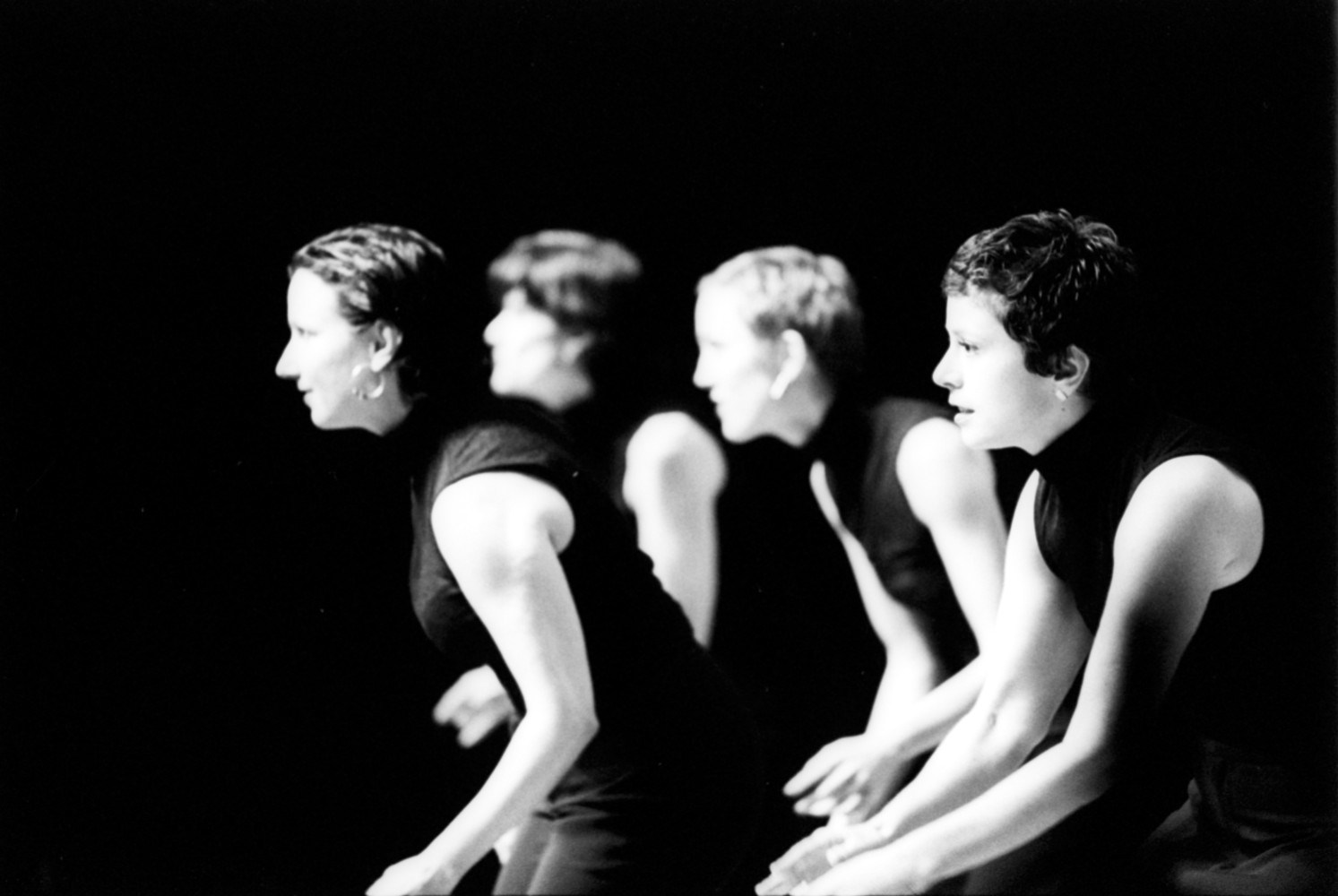
7. Barbara Duffy & Company, photo by courtesy of Barbara Duffy.
Historically speaking, from the sixties onwards we assisted at a very important process: women’s emancipation. We can find parallelisms in tap dance history, starting from the works of women like Dianne Walker, Brenda Bufalino, and more generally in the role of women in tap from a high heels/broadway figure to an empowered, rhythm tap dancer with flat shoes who can be and do whatever she wants, without falling in a “category”. What is your opinion on it, as a tap dancer who is actually part of this process?
«When women wore flat tap shoes, mostly starting in the 1970s, (There were women who danced in flat tap shoes before the 1970s, but only a few), it was considered kind of radical. As women tap dancers became more interested in rhythm tap, focusing more on the musicality of tap dance, it made sense to wear flats. The bigger heels on flat shoes provide a deeper bass sound, than the much smaller heels of high-heeled shoes. Women were taken more seriously (by men tap dancers) when they wore flats, but I think were often thought of as trying to dance like men.
When I started at Leon’s, I immediately got my flat tap shoes, not really thinking too much about its significance, actually. It was always understood that women needed to wear heels if they wanted to be on Broadway. I think that’s still probably true today.
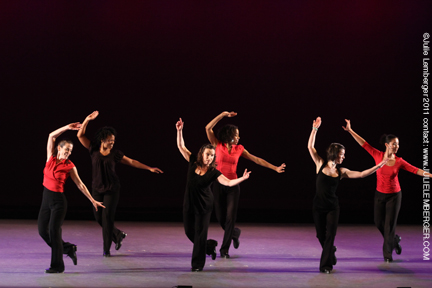
8. Barbara Duffy & Company, Symphony Space (2009). Photo by courtesy of Barbara Duffy.
Some younger women are able to do rhythm tap in heels, making a statement of their femininity that way. I think it’s also possible to express femininity in flats and that old way of thinking of women trying to dance like men is now in the past. Thank goodness! Women are now more free to find their own voices in tap, whether that is in heels or in flats».
Let’s talk about your book “Tap Into Improv: a Guide to Tap Dance Improvisation”. Why have you decided to write a book about tap, and specifically about how to improvise, which is, of course, a very important part of tap dancing?
«Many years ago, when I started dancing in this rhythm style of tap dance, I learned that part of the art form of tap dance is improvisation. I hated to improvise! I was very scared I would make a mistake. I had grown up learning routines and choreography and felt very secure with that. But, as my career progressed, there were many instances where I had to improvise.
I came to the realization, that I had to change my mindset about it, in order to overcome the fears. I figured that my students probably had those same fears, so I started holding classes in improvisation and developed exercises for the students (and for me!) to focus on, rather than the fear.
After almost 30 years, I decided to put all of these ideas and exercises into a guide. There is no other book like this. It provides physical, mental, musical, and emotional exercises that can be practiced either alone or in a group, in order for tap dancers of any level to expand their creativity and artistry in tap dance. I’ve also included advice from other tap dancers who I admire. It’s wonderful for teachers too!».
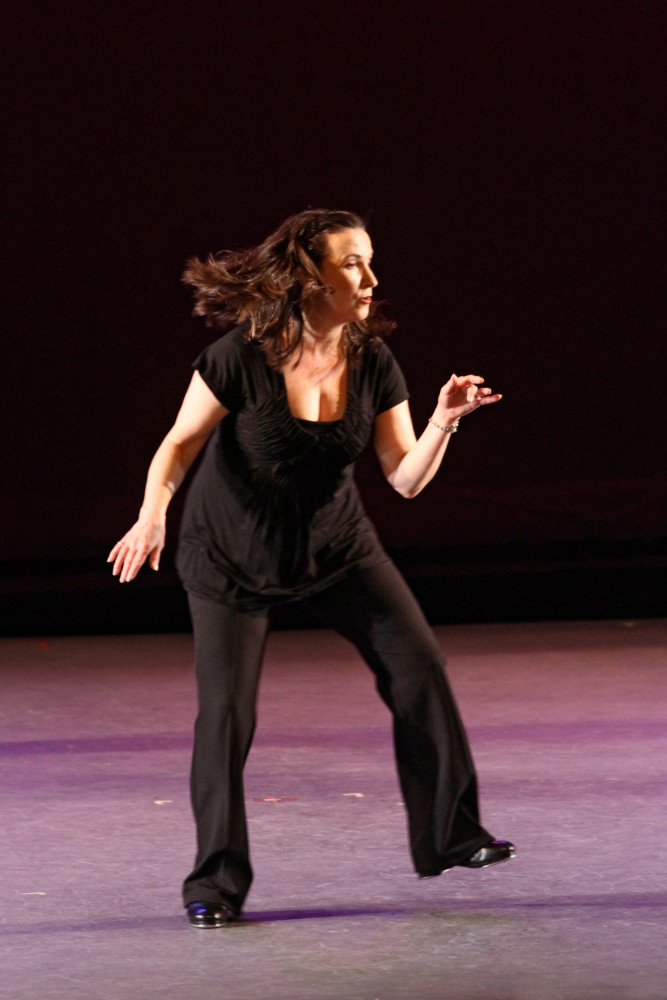
9. Photo by courtesy of Barbara Duffy.
Barbara Duffy, what do you suggest to students/dancer who wants to develop their musicality and sense of rhythm? Any advice for Italian Tap dancers?
«For all tap dancers, I think it’s extremely important to listen to jazz music, for its melodic and rhythmic qualities. Learning the differences between a straight rhythm, a swing rhythm, triplets, double-time, phrasing, and syncopation are essential. Singing the rhythm you want to make will also let dancers become specific in what they want to say with their feet.
There are many wonderful tap dancers in Italy! Some have come to the states to attend festivals and the Tap Teacher Training in NYC or just take classes to learn more about this American dance art form. I’ve given workshops in Milan, Genova, and Rome and had a great time!».
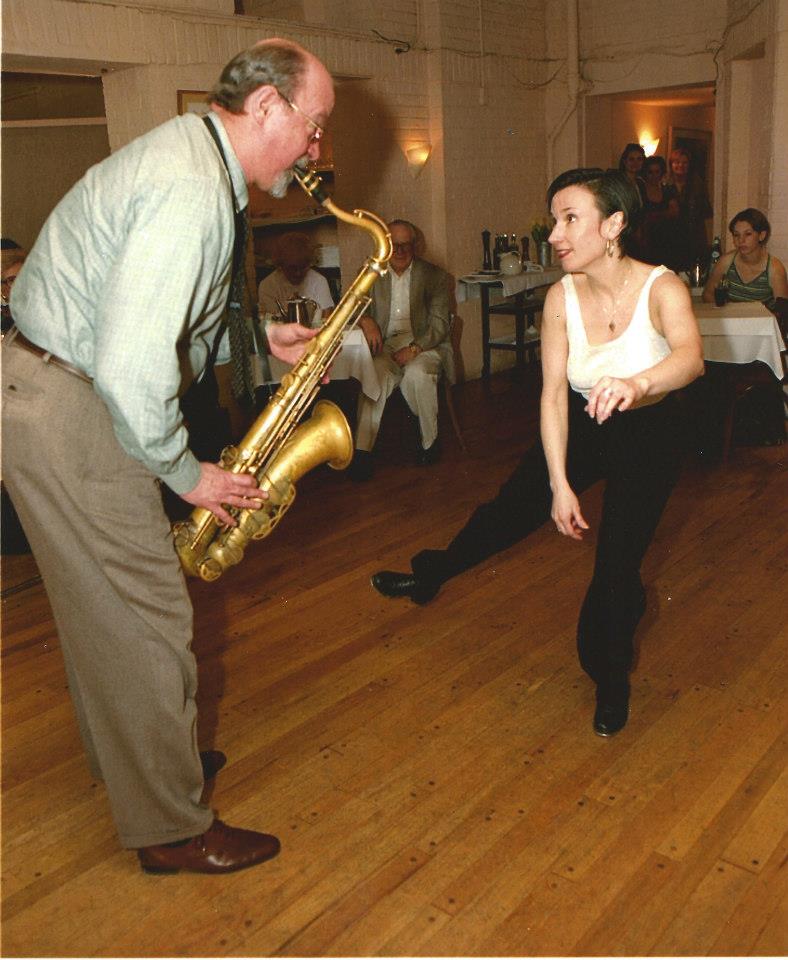
10. Barbara and Bob Kindred improvising at Zinno’s. Photo by courtesy of Barbara Duffy.
Where is going, in your opinion, Tap dancing today? How tap has changed compared to when you started?
«Tap dance has changed a lot since I went to classes at Tapper’s Paradise in the early 1980s. When I got to NYC in 1985, there were not a lot of classes to take as compared to now. It gained more popularity starting in the 1990s, because of shows like Jelly’s Last Jam and Bring in ‘da Noise, Bring in ‘da Funk, plus an increase of tap companies presenting shows on the concert stage and more tap festivals being organized, all focusing on rhythm tap, so the general public has become much more aware of tap dance.
Today, there are many more students going to classes and some of the younger professionals are creating conceptual work, which I enjoy. Hopefully, more tap films will be made and more Broadway shows will feature tap dance in the future».
Last but not least important, What are your plans for the future?
«For me, I will continue to teach workshops, especially in improvisation. I will continue to be on the faculty of the ATDF’s Tap Teacher Training program, which is so important for the future of tap dance and I will be collaborating on some upcoming projects with Ted Louis Levy».
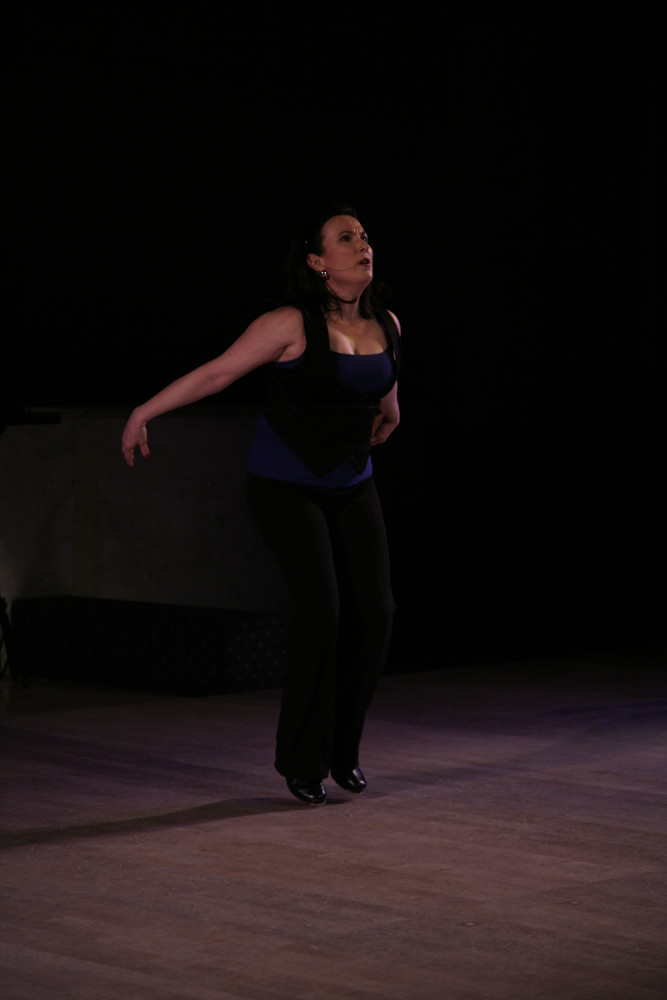
11. Photo by courtesy of Barbara Duffy.
We thank Barbara Duffy for her time.
For more information about her work, you can visit her Instagram profile.
To watch Barbara Duffy dancing in Boom click here.
To watch Barbara Duffy’s choreography Speedball click here.
You can find Barbara Duffy‘s book Tap into Improv, A Guide to Tap Dance Improvisation here.
To watch the trailer for the short film When Snow Falls click here.
Leggi l’intervista in Italiano qui.
- Hair an american Tribal love rock musical - 8 Aprile 2025
- Heather Cornell: la tap dance è musica, teatro e danza - 21 Gennaio 2024
- Heather Cornell: tap dance is music, theatre, and dance - 21 Gennaio 2024

